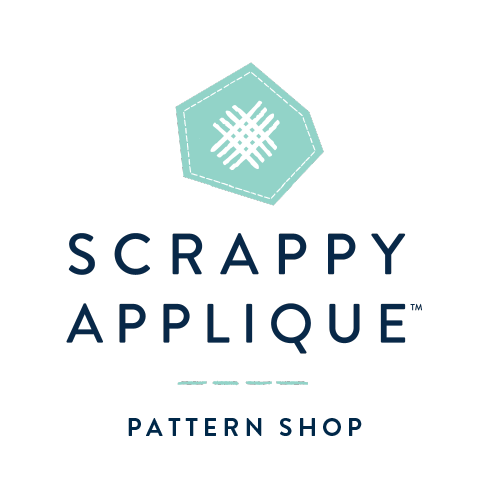I've taught color to thousands of quilters from all around the world, and a common struggle I hear from them is around Print Mixing.
How do you pair different prints from different fabric collections together in one quilt?
How can you include lots of prints without it looking too wild or messy?
Well, there are a lot of different ways you can do this, but today, I'd love to introduce you to the tool I'm calling the "Color Bridge"!
A Color Bridge is made up of blender fabrics that bridge the gap between two wild and seemingly unrelated prints. This is a fun exercise in strengthening your print mixing skills and can create a really unusual and fun palette.
Let's talk about how you can build your own Color Bridge.

Common Colors
Let's first pick out our 2 (or more) wild prints. When pairing 2 prints, especially 2 large-scale prints, making sure they have one or more color(s) in common is very helpful to ensure they fit cohesively together in your overall palette.
So in the above palette, I found those 2 prints with only 1 color in common: green. The green will help them connect, but alone, those 2 prints would probably look a little odd. Also, since they are both large-scale/multi-colored/attention-grabbing fabrics, they would likely compete with one another.
The solution: fill in the palette with a "bridge" of blenders!
Blenders
After choosing the 2 floral prints, I went on the search for "blender" prints that would help fill out this palette.
A blender fabric is one that blends well and doesn't grab too much attention. They are often called tone-on-tone or monochromatic. Solids and textured solids and many small-scale prints can have the same function.
I grabbed that green batik which picks up the green in both prints while not distracting from them.
Next I noticed that one print had purple while the other had pinks and fuchsias. Now purple, fuchsia, and pink are near one another on the color wheel, so I decided to bridge the two with those blenders.

I started at purple and went around the color wheel to magenta, pulling blenders of each color. This made a "Color Bridge" that connects the 2 seemingly unrelated fabrics!
You could create multiple bridges within one quilt, but I'd start out with just one. The Color Bridge not only fills out a palette, it helps make all the fabrics connect and play nicely together.
If you'd like to dive deeper into color, we have a full Color Curriculum inside Meander. It will take you from unsure or insecure with color to a master! Click here to learn more!
Your Turn! Why don't you give this exercise a try-- grab 2 large-scale fabrics that have 1 or more colors in common. Next fill in the palette with blenders and a "Color Bridge"!
We'd love to hear from you -- did you try the exercise? How did it go? What are your biggest challenges when mixing prints? Leave a comment below and let us know!


16 comments
I can not get to my stash and currently have no fabric where I am staying :( but I was able to listen to your zoom session today and see some of the ideas others shared and loved it. I feel that this exercise will be very helpful to me once I can play with my stash. Thank you for sharing your expertise!
So helpful. I love a simple system and these makes so much sense
Could you show us the block or quilt you made using these colors?
Thanks for the helpful information.
Thanks for this explanation!